Most carpers know the frustration of not being able to land a rig quite far enough – whether dropping irritatingly short of a distant island margin or far bank, or not being able to get a rig amongst carp showing well out.
Casting is something we teach ourselves, and given that most of us are never taught the basic principles it’s no surprise that ability varies drastically.
Advances in carbon rods, supple, strong and lower diameter reel lines, bigger reels with impeccable line lay and excellent terminal tackle allow us to fish greater distances more easily than ever.
On the other hand most still live in cuckoo land, talking about chucks of 150 yards when they’d be lucky to be hitting a ton.
Long casting (or just talking about it…) doesn’t make you a hero, it’s all about the end result. Belting leads to the horizon is of no value if you aren’t catching and would be catching more sat quietly with baits one yard out.
What most of us need is to be able to fish further on the odd occasion it is required.
You should be able to fish effectively, and safely at 100 yards and more. Good casters with standard tackle can hit 100 yards with a quality 12 lb main line straight through, but the sheer number of cracked off rigs that I come across leaves me convinced that we need to think about carp and angler safety much more keenly.
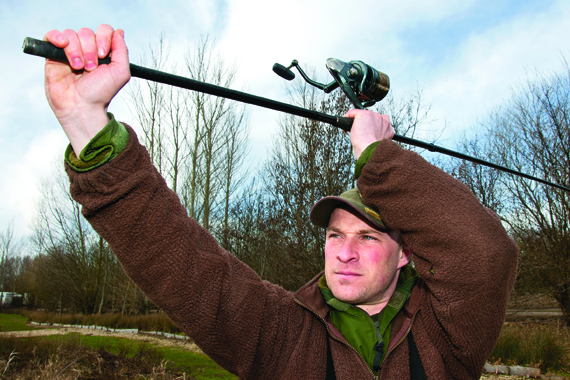
Here I’m using my usual progressive 2.75 lb rods which are far from distance animals, 12 lb (0.34 mm) main line which is a standard choice rather than a fine casting line.
With the benefit of reasonable technique and the added security of a knotless tapered leader line, it allows me to fish PVA bags at 100 yards and more – measured against the line clip.
Your arms govern how effectively you compress the blank. If you are bursting blood vessels to get leads out and groaning like a shot putter, the rod isn’t being worked properly, the effort is coming from you.
Your left arm gripping the butt of the blank should be straight and extended, the right arm bent at the elbow so the reel is directly above your head. Being cack handed my arms are the other way around in the picture, but I accept you righties are in the majority and caption it accordingly. Professional to the end!
With the tips that follow, most should be able to fish bags at these ranges without considering new kit, and most importantly of all, SAFELY.
Long casting is about technique and a fortune on high test curve carbon won’t necessarily help. Years back the Mail sent me out to trial distance rods, varying from £100 to three times that. Give or take five yards I cast the same distance with them all (measured 150-160 yards) because that is what my ability allowed me to do.
Good technique and reasonable tackle casts further than specialist kit with less ability. Your ability is the factor limiting distance, not tackle.
Smaller free-spool style reels will cast a long way in the right hands, but big pits with good line lay result in less line twist and retrieve rigs quicker. I dislike beach size reels, preferring a mid-size with a relatively big spool.
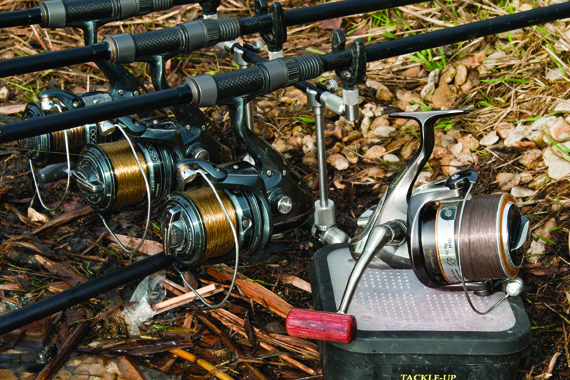
I use 12 ft 2.75 lb rods for pretty well everything, which allow you to fish at 100-120 yards with correct tackle and technique. Stepping up to 3 lb test 12-footers usually gives you a tool with more emphasis on casting, but is only worthwhile if you tackle larger venues regularly. But 50 mm ringing won’t help as much as good technique.
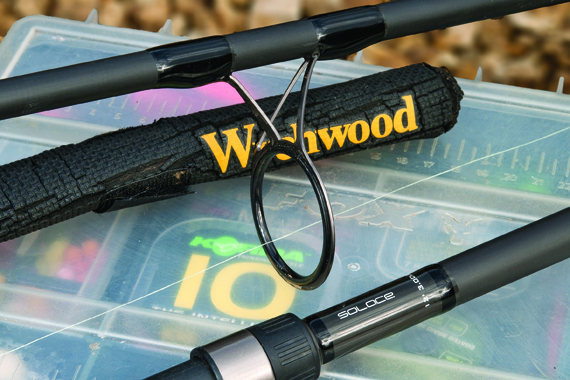
Larger 50 mm ringing has become vogue to reduce friction from large coils of line leaving high diameter spools, and can be found even on cheaper price point rods.
Many waters ban shockleaders, a move I support for carp safety. Tapered mainlines, from several top manufacturers, avoid the need for using a knot which could decrease the rigs safety, with the peace of mind that you are much less likely to crack off on the cast.
For distance work spool with, for example, Tapered Leader Line from ACE, the leader section runs from 25 into 10 lb main line or 30 lb to 12 lb. The thicker leader length prevents crack-offs but there’s no knot behind the end tackle to compromise rig safety.
If you want extra distance without the worry of a leader, please take this knotless alternative. Choose the 10-25 lb version for maximum range, the 30-12 lb giving security of a standard main line for durability with the casting peace of mind of the stronger leader.
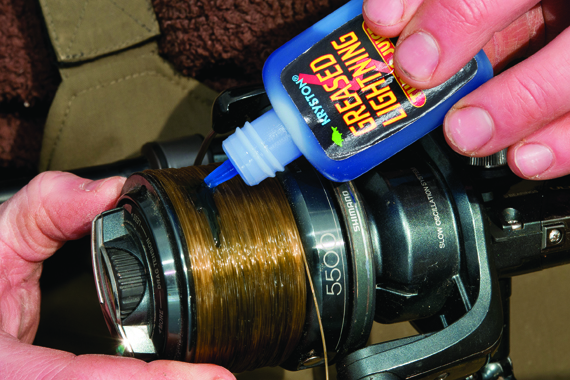
Whether chucking genuine long distance or just struggling and dropping short, Kryston’s Greased Lightning adds yards to your cast.
A lubricant liquid squirted on the spool, allows it to disappear from the reel and through the rings with reduced friction.
At £7 per bottle it’s cheaper than new rods and improves life of your line and abrasion resistance into the bargain.It encourages line to float so you’ll take a few seconds more to sink your reel line but it makes a significant difference to distances you achieve.
You’d be surprised how some bombs tumble or wobble in flight. The only choice for maximum distance is a streamlined distance pear lead. These pointed, bullet shaped bombs (below) cast noticeably better than any other design.
Slender bombs offer reduced bolt effect when a carp tightens a link, but if you can’t get the hook bait in front of fish you aren’t catching anyway. It’s always a trade off, with getting a bait in front of carp the most important factor.
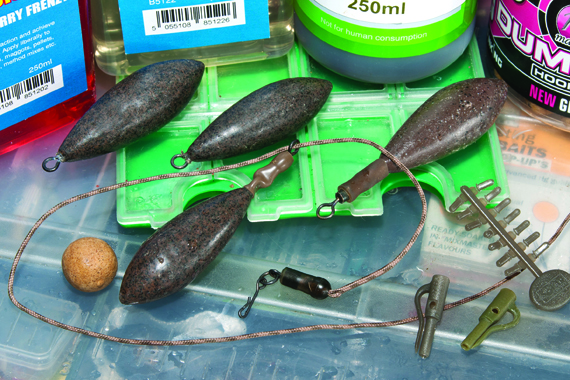
Bullet shaped leads prevent the lead from “wobbling” in flight, resulting in greater distances.
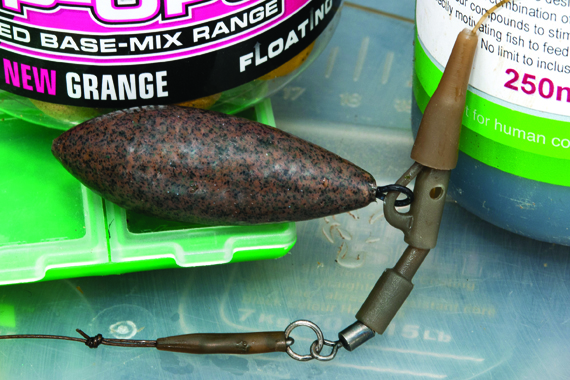
I always prefer a running rig. Solar’s lead clips and run beads give the convenience and long casting of a lead clip but great indication because they allow line to be pulled through the clip to give instant registration of a pick up.
With tapered leader line I avoid leadcore – perversely the high diameter of the leader line results in a bulky knot, which is a potential danger. Snip the swivel from a distance lead or shroud it in a silicone sleeve to prevent tangling around the lead. A Fox kwik change ring swivel and ESP rig sleeve allows instant replacement of rigs.
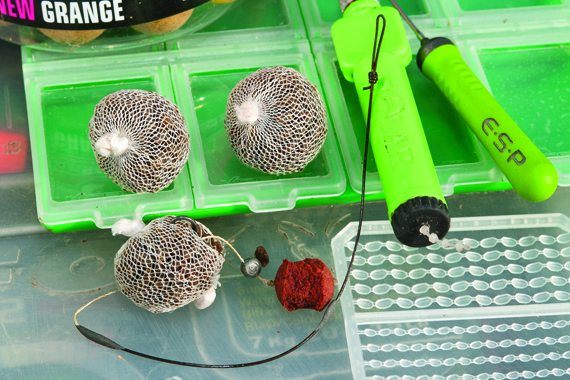
If I can still reach the intended target area doing so I’ll always add a tiny bag of micro pellets to the rig, sliding it down the link and pulling the hook into it.
A hook bait plus a pinch of pellets is more attractive than a hook bait alone. The resistance of a bag costs you distance, but eliminates tangles even with long hairs.
Keep bags as small as you can, marble size is enough, or distance really suffers. If you can’t reach with a bag, drop it and use a length of tubing behind the Solar clip and fish hook bait only.
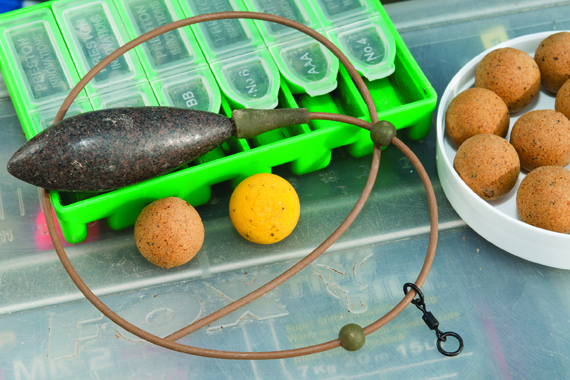
Still dropping short? Win extra yards again by switching to a helicopter rig.
With the bomb tied to the end of the line helicopters fly brilliantly. For helicopters and big chucks use tubing not leadcore, because of the implications of a bulky knot tying the higher diameter leader section of line to leadcore.
Tubing is safer – in event of a crack off, a tubing rig falls apart leaving the carp just trailing a short link.
Helicopter rigs at any range cannot be used with cobweb bags. They are a hook bait only end tackle.
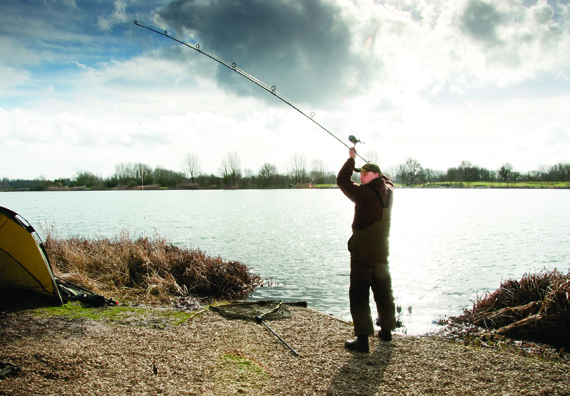
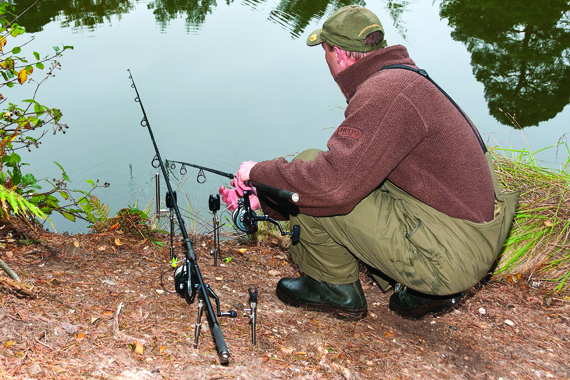
Take time after giving it the big chuck to make sure your line is properly sunk.
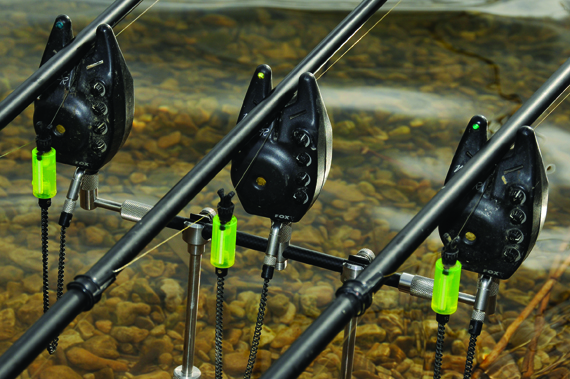
Drop-back takes are a regular feature, especially if using helicopter end tackles.
The further out you fish the more delayed your indication, line being strung through 100 yards of water, weed, undertow and across obstacles.
Bobbins need to be fished clipped up and fitted with additional drag weights. Distance work is no place for slack lines. The best indication is when bobbins hang on a natural drop.
With running lead clip end tackles you should get line tighteners or spool spinners, but bobbins hanging on a short drop remain the best choice.
I HOPE THIS HELPS… AND GOOD LUCK!
CAUGHT A BIG FISH? Email pictures and details exclusively to Angler’s Mail, your best value weekly fishing magazine. Email to: [email protected]
Dress Up Games For Girls - The Virtual Fashion Fun

A Brake Drill for Beginning Mountain Bikers
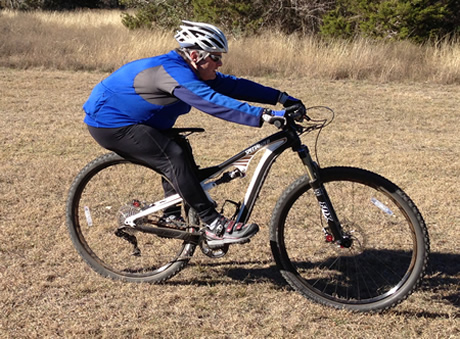
How to become a soccer fan in college football event

Copyright © www.mycheapnfljerseys.com Outdoor sports All Rights Reserved